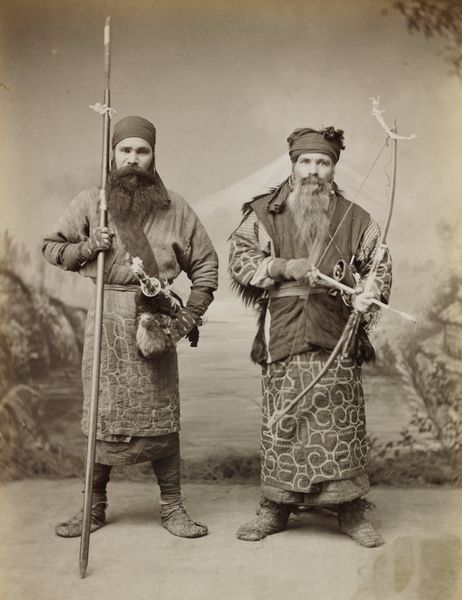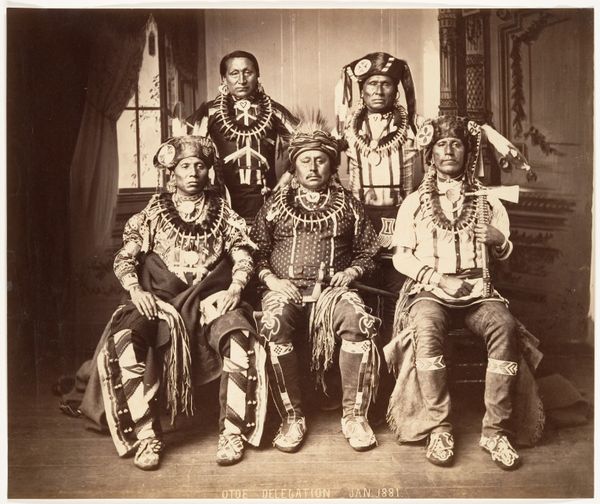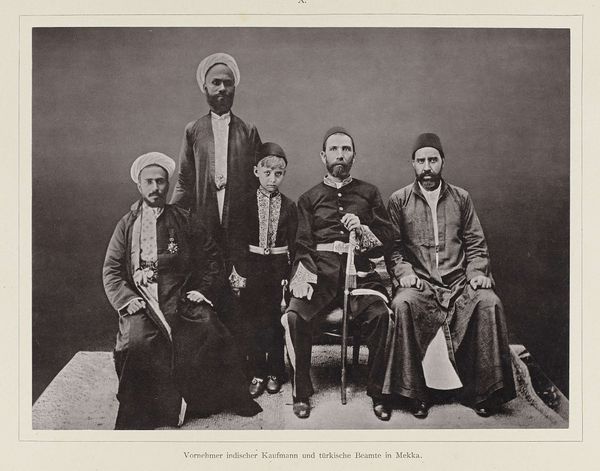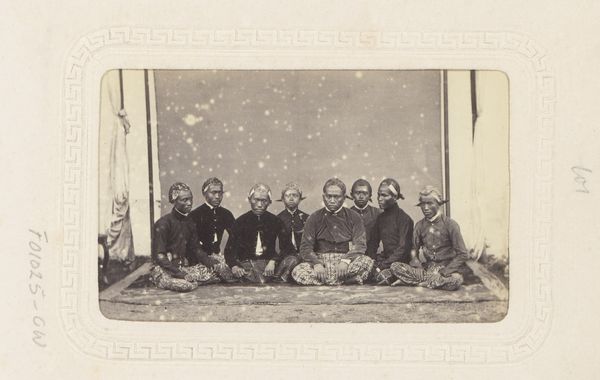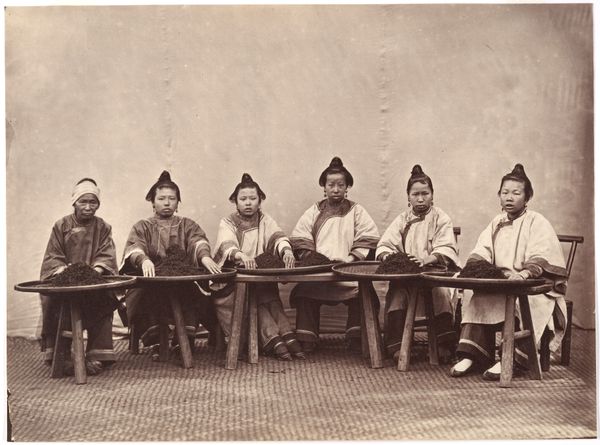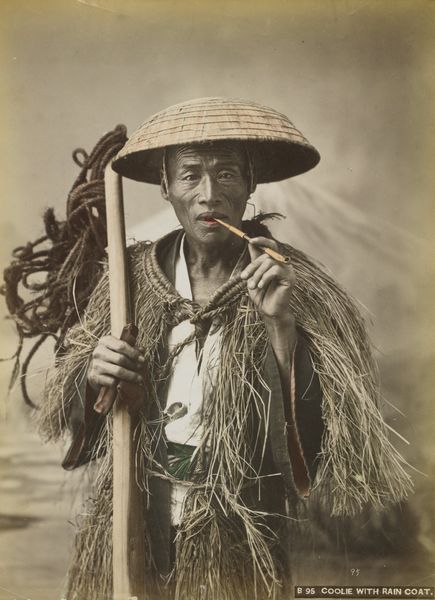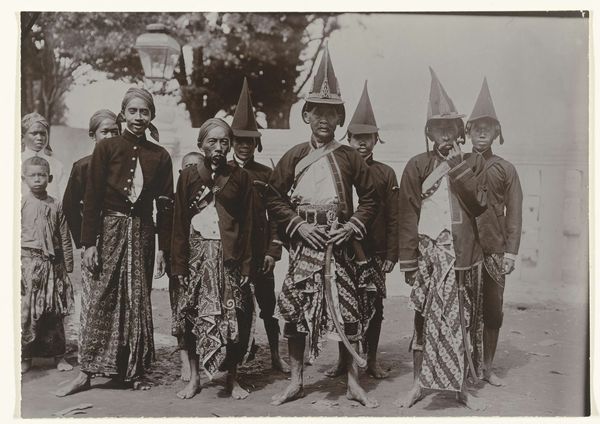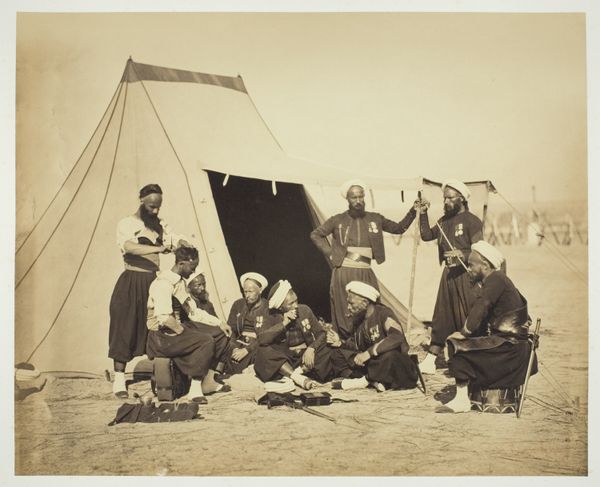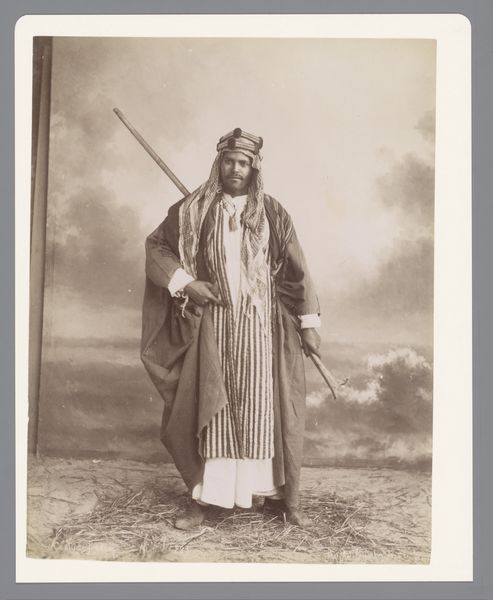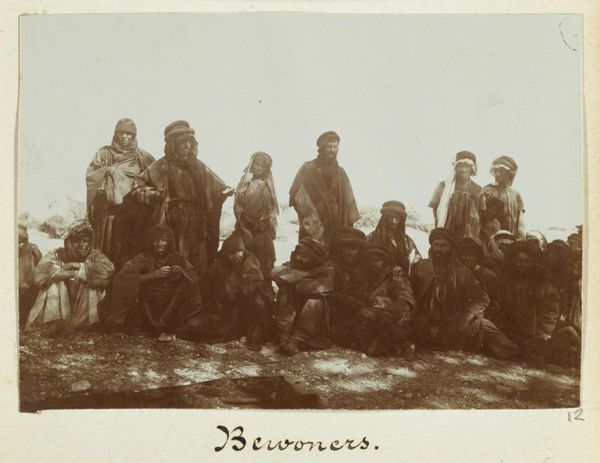
photography
#
portrait
#
photography
#
historical photography
#
historical fashion
#
19th century
Dimensions: 7 3/4 x 10 1/2 in. (19.69 x 26.67 cm) (sheet)9 x 13 x 1 1/2 in. (22.9 x 33 x 3.8 cm) (album, closed)
Copyright: Public Domain
Curator: Here we have a remarkable piece: an anonymous photomontage dating from the late 19th or early 20th century entitled "Group of Ainos." It is currently housed here at the Minneapolis Institute of Art. Editor: The muted, almost sepia tones, give the photograph a somewhat grave, formal quality. The poses are very still; the whole piece feels meticulously arranged, down to the detail in their garments. Curator: Absolutely. It’s crucial to understand these images as products of their time. During this period, photography became increasingly intertwined with ethnographic studies. "Group of Ainos" exemplifies the Western fascination with documenting so-called "exotic" cultures. The Ainu people, indigenous to regions including Hokkaido, Japan, and Russia, became subjects of intense scrutiny. These photographs often served to reinforce colonial narratives. Editor: Looking past the intent, one is still compelled by the surface textures. Note the layering of robes, the rough weave, the contrasts in each outfit. Semiotically, the dark clothing connotes dignity; in structural terms, it visually unites the figures. And it's impossible to ignore the impact of light and shadow on their faces. Curator: Right. However, we should bear in mind that studio portraits like this one, while seemingly objective, were very often staged and manipulated. Clothing, props, and even poses were often selected by the photographer, and not by the subjects themselves. The historical impact and presentation become quite political in nature when you begin to dissect what choices the photographers made in constructing a view for consumption by outside audiences. Editor: That context enriches how we observe the aesthetic here, the composition’s reliance on linear, rectangular blocks. These forms create a powerful framework that gives order to what may have originally been chaos. The artist imposes order. The light as well seems calculated; you could map its movement around each of the figures in the arrangement. Curator: Precisely! This photomontage allows us to critically reflect on the politics of representation. The artwork becomes an artifact revealing a specific period in social thought, offering a window into how different populations have been represented, controlled, and exploited. Editor: The historical reading you are providing gives depth to this experience. Thinking on this portrait's intrinsic artistry I'm seeing so much more, from how the lighting creates distinct zones within the picture plane, to what those spatial zones tell us about individual placement. Curator: In conclusion, "Group of Ainos" provides invaluable insight into the dynamics of power and representation during a specific historical moment. Editor: I will leave seeing new structures, which the historical detail highlights rather beautifully. A fascinating dialogue indeed.
Comments
No comments
Be the first to comment and join the conversation on the ultimate creative platform.
